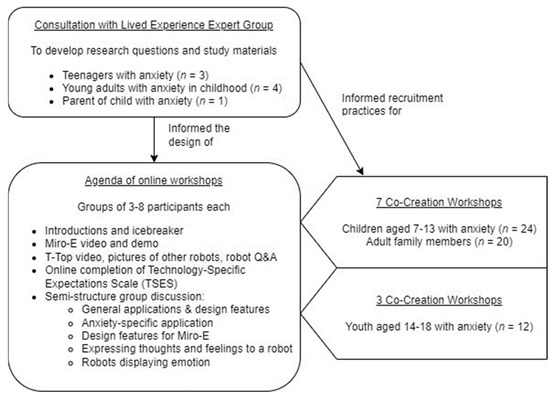Dysphoria in dogs after surgery can last for a period of time, typically ranging from a few days to a few weeks. During this time, it is important for pet owners to provide adequate support and care to help their dogs recover and alleviate any discomfort they may experience.
Dogs may display behavioral changes, restlessness, or decreased appetite while recovering from surgery, but with proper attention and management, these symptoms tend to improve over time. Providing a comfortable and quiet space, administering prescribed medications, and following post-operative care instructions from the veterinarian can help ensure a smooth recovery process for dogs undergoing surgery.

Credit: www.mdpi.com
Understanding Dysphoria In Dogs After Surgery
When dogs undergo surgery, they may experience a range of emotions and physical discomfort during the recovery process. One common emotion that dogs can experience after surgery is dysphoria. It is important for pet owners to understand what dysphoria is, the causes behind it, and the signs and symptoms to look out for. By understanding dysphoria and its effects on dogs after surgery, pet owners can provide the necessary support and comfort to their furry friends during this challenging time.
What Is Dysphoria In Dogs?
Dysphoria in dogs refers to a state of unease, restlessness, or dissatisfaction that they may experience after surgery. It is an emotional response resulting from the physical and psychological stress of the surgical procedure and the subsequent recovery period.
- Dogs may exhibit signs of anxiety, fear, or agitation due to the changes in their body and the discomfort they feel.
- Their normal behavior and routines may be disrupted, leading to confusion and a sense of unease.
- Dysphoria can vary in intensity and duration depending on various factors like the type of surgery, individual dog’s temperament, and the level of post-operative care provided.
Causes Of Dysphoria After Surgery
The onset of dysphoria in dogs can be attributed to several factors:
- Pain and discomfort: Dogs may experience pain at the surgical site, which contributes to their dysphoric state. The discomfort caused by the healing process can also lead to frustration and unease.
- Medication side effects: Some medications prescribed for pain management or post-operative care can have side effects that contribute to dysphoria in dogs. These side effects may include drowsiness, disorientation, or changes in behavior.
- Changes in routine: After surgery, dogs often need to adapt to a new routine, including restrictions on physical activity and changes in diet. These changes can disrupt their regular habits and may contribute to their dysphoric state.
Common Signs And Symptoms Of Dysphoria In Dogs After Surgery
It is important for pet owners to be aware of the signs and symptoms that can indicate dysphoria in a dog recovering from surgery:
- Restlessness: Dogs may have difficulty settling down and may appear agitated or unable to relax.
- Loss of appetite: A dog experiencing dysphoria may show a decreased interest in food or refuse to eat altogether.
- Whining or whimpering: Dogs may vocalize their discomfort through whining or whimpering sounds.
- Excessive licking or biting at the surgical site: Dogs may exhibit obsessive behaviors like compulsively licking or biting at the surgery site due to pain or anxiety.
- Increased sleep: Conversely, dogs may also sleep more as a way to cope with the discomfort and stress they are experiencing.

Credit: www.capradio.org
Factors That Influence The Duration Of Dysphoria In Dogs
Several factors can influence the duration of dysphoria in dogs after surgery. These include the type and complexity of the surgery, the dog’s pre-existing conditions and overall health, the management of postoperative pain and discomfort, and the environmental factors and support provided. Understanding these factors can help pet owners and veterinarians anticipate and address any potential dysphoria-related issues during the recovery period.
Type And Complexity Of Surgery
The type and complexity of the surgery play a crucial role in determining how long dysphoria may last in dogs. More invasive procedures, such as orthopedic surgeries or abdominal surgeries, may result in a longer recovery period, potentially leading to prolonged dysphoria. On the other hand, less invasive surgeries, like neuters or minor tumor removals, may result in shorter durations of dysphoric behavior.
Pre-existing Conditions And Health Of The Dog
A dog’s pre-existing conditions and overall health can significantly influence the duration of dysphoria post-surgery. Dogs with underlying health issues or compromised immune systems may experience a prolonged recovery period, leading to extended periods of dysphoria. Optimal health and proper management of pre-existing conditions can help minimize the duration of dysphoric behavior in dogs.
Management Of Postoperative Pain And Discomfort
The management of postoperative pain and discomfort is crucial in reducing the duration of dysphoria in dogs. Effective pain management techniques, such as appropriate medication, wound care, and physical therapy, can help alleviate discomfort and promote faster healing. Timely administration of pain medication and closely monitoring the dog’s response to treatment can significantly reduce dysphoria post-surgery.
Environmental Factors And Support
The environment in which the dog recovers and the support provided by the owner also play a role in influencing the duration of dysphoria. Creating a calm and comfortable environment, free from potential stressors, can contribute to a quicker recovery and reduced dysphoric behavior. Additionally, providing emotional support, engaging in light activities, and maintaining a routine can help improve the dog’s mental well-being and lessen the duration of dysphoria.
In conclusion, the duration of dysphoria in dogs after surgery is influenced by various factors. These include the type and complexity of the surgery, the dog’s pre-existing conditions and overall health, the management of postoperative pain and discomfort, and the environmental factors and support provided. By considering these factors and taking appropriate measures, pet owners can help minimize the duration of dysphoria and ensure a smoother recovery for their furry friends.
Expert Insights On Managing Dysphoria In Dogs After Surgery
After undergoing surgery, dogs may experience a condition called dysphoria, which refers to a state of restlessness, discomfort, and unease. It is crucial for dog owners to understand how long dysphoria may last and how to effectively manage it during their pet’s recovery. Here are some expert insights on managing dysphoria in dogs after surgery, including veterinary approaches and medications, non-pharmaceutical strategies and therapies, the importance of postoperative care and monitoring, and tips for supporting emotional well-being during recovery.
Veterinary Approaches And Medications
Veterinary professionals can employ various approaches and medications to help alleviate dysphoria in dogs after surgery. This may include the use of:
- Analgesics – These are pain-relieving medications that help reduce post-operative discomfort and anxiety in dogs.
- Sedatives – In some cases, veterinary professionals may prescribe sedatives to calm dogs and provide them with a sense of relaxation during the recovery period.
- Anxiolytics – These medications are specifically designed to reduce anxiety and promote a calm state in dogs.
It is crucial to follow the veterinarian’s instructions regarding dosage and administration to ensure the safety and well-being of your furry friend.
Non-pharmaceutical Strategies And Therapies
In addition to medications, there are non-pharmaceutical strategies and therapies that can be beneficial in managing dysphoria in dogs after surgery. These include:
- Environmental Enrichment – Providing a stimulating environment with interactive toys, puzzles, or treat-dispensing devices can help divert the dog’s attention and reduce restlessness.
- Gentle Massage – Massaging your dog using gentle strokes and soothing techniques can help promote relaxation and alleviate discomfort.
- Acupuncture – This alternative therapy involves the insertion of thin needles into specific points on the dog’s body, stimulating the release of endorphins and promoting a sense of well-being.
It is essential to consult with a qualified veterinary professional before implementing any non-pharmaceutical strategies or therapies to ensure their suitability for your dog’s specific condition.
Importance Of Postoperative Care And Monitoring
Postoperative care and monitoring play a crucial role in managing dysphoria in dogs after surgery. Here are some important steps to consider:
- Follow your veterinarian’s postoperative care instructions diligently, including any medication schedules or restrictions.
- Ensure your dog’s recovery environment is quiet, comfortable, and free from potential stressors.
- Regularly monitor your dog’s incision site for any signs of infection or inflammation.
- Observe your dog’s behavior closely for any signs of pain or distress and report them to your veterinarian promptly.
By providing diligent care and monitoring, you can help your dog recover smoothly and minimize the duration and severity of dysphoria.
Tips For Supporting Emotional Well-being During Recovery
Supporting your dog’s emotional well-being is crucial in managing dysphoria after surgery. Here are some tips:
- Create a calm and quiet space for your dog’s recovery, away from loud noises or excessive disturbances.
- Engage in gentle play or activities that your dog enjoys, promoting positive stimulation and mental well-being.
- Provide comforting and reassuring interactions through gentle touch, soothing words, and praise.
- Maintain a consistent routine, including regular mealtimes, walks, and rest periods to establish a sense of stability.
Remember that every dog is unique, and their recovery experience may vary. Providing tailored emotional support can help your furry friend navigate the post-surgery period more comfortably and reduce distress.

Credit: www.capradio.org
Frequently Asked Questions On How Long Does Dysphoria Last In Dogs After Surgery
How Can I Help My Dog With Dysphoria After Surgery?
To help your dog with dysphoria after surgery, provide a calm and comfortable environment. Keep them away from loud noises and excessive activity. Provide gentle exercise and mental stimulation. Give them their medicine as prescribed and offer comforting cuddles. Consult your veterinarian for specific advice and support.
How Long Does It Take For Anesthesia To Wear Off In Dogs?
Anesthesia typically takes a few hours to wear off in dogs. The exact time depends on the type of anesthesia used, the dog’s size, and the procedure. Give your pup a quiet and comfortable place to rest until the effects fully dissipate.
What Is The Difference Between Pain And Dysphoria In Dogs?
Pain and dysphoria in dogs are different. Pain is a physical sensation caused by injury or illness, while dysphoria is a mental and emotional state of unease or dissatisfaction. Dogs may exhibit signs of pain like limping, whining, or changes in appetite, while dysphoria may manifest as behavioral changes or withdrawal.
How Long Will My Dog Whine After Anesthesia?
Your dog may whine for a few hours to a day after anesthesia.
Conclusion
Understanding the duration of dysphoria in dogs after surgery is crucial for pet owners. While each dog may have a unique recovery timeline, it is essential to monitor their behavior and provide them with the necessary care and comfort during this period.
By being attentive and patient, pet owners can alleviate any discomfort their furry friends may be experiencing and help them make a smooth transition to their normal routine.



